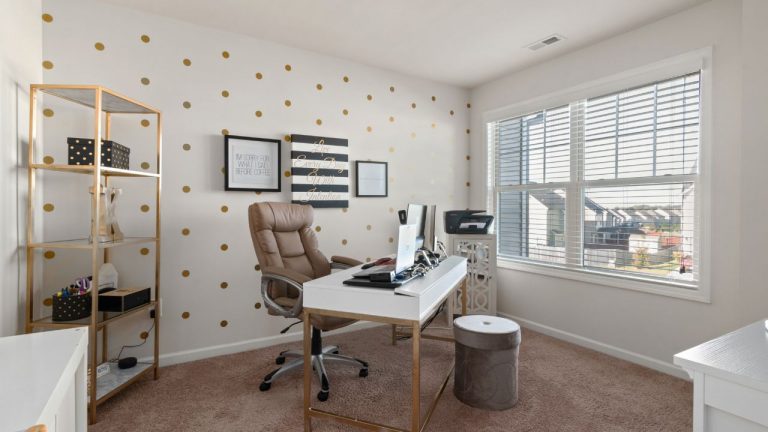How To Choose Mat For Office Chair? [Beginner’s Guide]
The basic purpose of any kind of mat is to protect the object underneath it from scratches. So, if you are worried about ruining the floor’s aesthetics with an ergonomic chair, mats are the solution. But, as a beginner, how do you even choose a mat for an office chair?
The most important features of an office chair mat are its thickness, overall size, shape, and material. Among them, the thickness and material should suit your specific flooring type.
There’s more to choosing a chair mat than just picking the most vibrant one. And, we are about to discuss it in detail here. Stay tuned.
How Much Area Should Your Chair Mat Cover?
The first question you encounter while choosing a chair mat is how big it should be. It depends on your preference, for sure. However, the rule of thumb is to get a mat that covers a slightly larger area than the actual chair. It allows you to put your feet on the mat.
Again, don’t go for big chair mats if the working space is congested. You don’t want the mat to run inside another piece of furniture. It should only cover the chair area perfectly.
Apart from that, track how much distance you cover while rolling the chair on the floor. It’s better if your chair mat can be large enough to cover the entire rolling area as well. That way, the sharp casters will always be on top of the mat. You can rest assured the wheels won’t damage your precious flooring.
What’s The Ideal Mat Size?
Once you start researching different mat sizes, you’ll know there’s one perfect size. Instead, the ideal size completely depends on your office layout. The market allows you to get chair mats from 23” to 60” wide. The only rule is to stay within this threshold. Anything beyond 60” (width) will look more like a carpet than a simple chair mat. Whereas, there’s no use in having a mat that doesn’t properly cover all the wheels.
As a rule of thumb, go with a 36”x48” dimension. If you have a medium-sized office with a desk within 55” to 60”, a chair mat with such width and length will look nice. But you don’t have to trust that blindly. Obviously, visualize how it will look under your office chair first. For that, cut a cardboard with the same measurement (whatever you want to try). Put the chair on top of it. Roll the chair one or two times to see whether the wheels stay inside the cardboard or not. If it looks too big or too small, don’t hesitate to try other sizes.
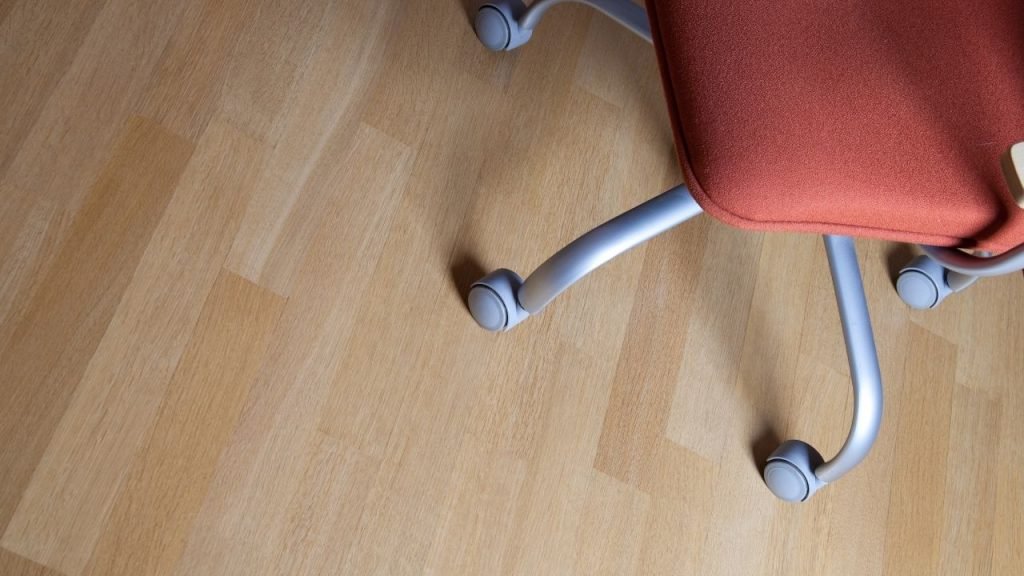
What’s The Ideal Shape For A Chair Mat?
You can even pick the shape of your mat. Unlike the size, most people don’t consider the shape as important. They only worry about how it looks and nothing else. But the shape of your chair mat has more to do than just be visually pleasant.
Let’s see, how many shapes are available in the market and whether they suit your style or not.
1. Rectangle
You must already know what a rectangle shape means. Remember the ideal shape we just mentioned? Yes, the 36”x48” dimension also indicates a rectangular shape. It suits almost every kind of office layout. You will have more coverage in the front and back to move the chair.
2. Lipped
Lipped or T-shape mats are perfect when your office layout is more complex. Imagine, you need a coverage of 48”x60” mat. The problem is that you don’t have enough surface to lay it properly. Your desk legs or other furniture might be getting in the way.
For those circumstances, lipped mats are better than a simple rectangle shape. You still get to enjoy the same coverage, with a T-shaped cut close to the edge.
3. Contour
Contour-shaped mats offer an oval shape on the edges. It used to be perfectly straight with the previous ones. The shape is available in almost any shape. It allows you to fit the mat perfectly under tight spaces as well. There’s no need to push its edges under the desk or cabinet.
4. Round
Round is an unusual shape for an office chair mat. Nobody really expects it. However, it is designed to fit the chair only without giving you much room for rolling. It works when you use a static chair instead of an ergonomic one.
Suppose you want to protect the expensive flooring from the chair legs only. You don’t want any dents or scratches on the wooden surface. Having a round shaped mat under the chair while you sit should be more than enough. It’s very rare to see a large mat of this shape. But you can go for it if that’s what you like.
5. Square
Do you need more coverage than an average rectangular-shaped mat? Then, go for a square one. It allows you to enjoy the same inches on every side. In case, you have a habit of moving horizontally while using the ergonomic chair, you will love this shape.
But it looks better when the office is medium to large.
Which Material Should You Choose For An Office Chair Mat?
Even though multiple mat material is available on the market, we would like you to stick with a basic polycarbonate one. Polycarbonate plastic rules the market of chair mats due to its extreme durability. It never warps, curls, and stays in shape regardless of how many times you roll the chair.
Plus, polycarbonate is cheaper than other materials as well. You can customize it to be any color you like. It is ideal for both hard floor options and carpets.
If you want to expand the choices, take a look at vinyl or tempered glass mats. Since vinyl mats are typically on the thinner side without harsh spikes, you can only use them for tile or wooden floors.
Does The Thickness Of Your Chair Mat matter?
After you have settled on a particular mat size, it’s time to research the ideal thickness. Yes, mats come in a variety of thicknesses to meet everyone’s needs. The most common thickness range is ¼” to 1”. If you are too confused, make sure you don’t cross this limit.
That being said, for a superior experience, check the following table.
| Flooring Type | Recommended Mat Thickness |
|---|---|
| Hard floor (tile, marble or wooden) | ⅛ inches |
| Low-pile Carpeted Floor | ¼ inches |
| Medium-Pile Carpeted Floor | Half inches |
| Fluffy/High-Pile Carpeted Floor | 1 inch or more |
You can use thick chair mats on a hard floor or carpets. But, be careful with thinner mats. They only suit hard wooden or tiled floors.
Did you know that your mat’s thickness is useful for noise reduction? Yes, we are talking about your chair’s irritating sound every time you move it on the floor. That noise will significantly reduce with the use of chair mats.
And, the more sensitive you are to such noises, the thicker your chair mat should be. Hope you got the point.
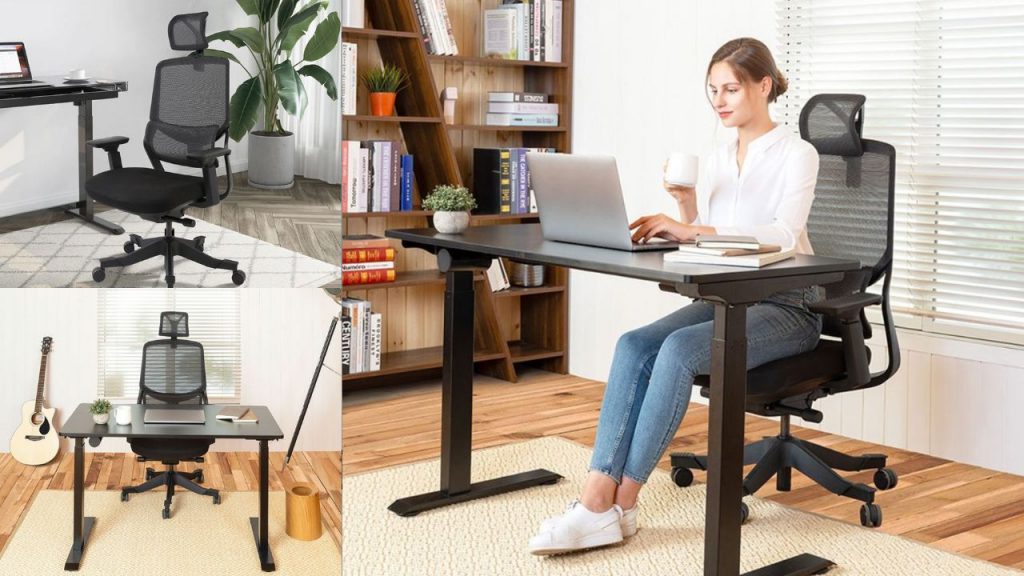
Does The Backing Style Matter?
Backing style is a very important feature to look at. Most people buy mats without checking the underside.
You see, backing style dictates how firmly the mat will stay in one place. It’s preferable to choose cleated or short spiked mats for better grip.
However, choosing long spikes for a tiled floor can backfire. That’s because the spikes can be harsh on the floor. Especially when you sit on the chair and roam around, the spikes are further pressed into the tiles. Hence, you might notice scratches or dents after a certain period of time. It kind of ruins the whole purpose of getting a mat in the first place.
So, here’s what you need to do. Check the flooring type first. Is it a hard floor? If yes, avoid long spikes at any cost. Stick with a simple cleated back. You can also choose tempered glass or transparent vinyl mats as they enhance the aesthetics of the area.
That being said, if the floor is already carpeted, you would need more spikes to establish a strong grip. Otherwise, the mat would slip frequently causing accidents.
There’s no measurement for the ideal spike size. Just remember that the spike/anchor’s length should increase in proportion to the thickness of your carpet. So, fluffier carpets will require long spikes to anchor the mat into one place perfectly.
Is It Worth Getting A Chair Mat On Carpeted Floor
People often assume chair mats are only to protect your floor. That’s why there’s no need for mats if you already have carpeted the entire floor. Sadly, it’s a myth.
You still need the protection of chair mats to protect the carpet itself. Yes, your carpet is vulnerable to the sharp edges of a chair’s casters. As you roll them over and over again, the carpet(especially if its woolen) will get damaged.
There’s nothing worse than watching a unique and antique carpet slowly deteriorating in front of your eyes.
For that, we recommend chair mats even if you have carpets. But stick with the guidelines we mentioned earlier. As you know, you should be looking for different things in a mat for a carpeted floor.
Before You Go!
Carpeted floors are pretty common nowadays in an office setting. We highly recommend getting a suitable chair mat. But no wonder, you might have a lot of confusion since there are so many types of carpets. It gets overwhelming to learn the ideal mat type for each of these carpets.
If that’s the situation with you, this guide on choosing the right mat for your carpet will help you out.

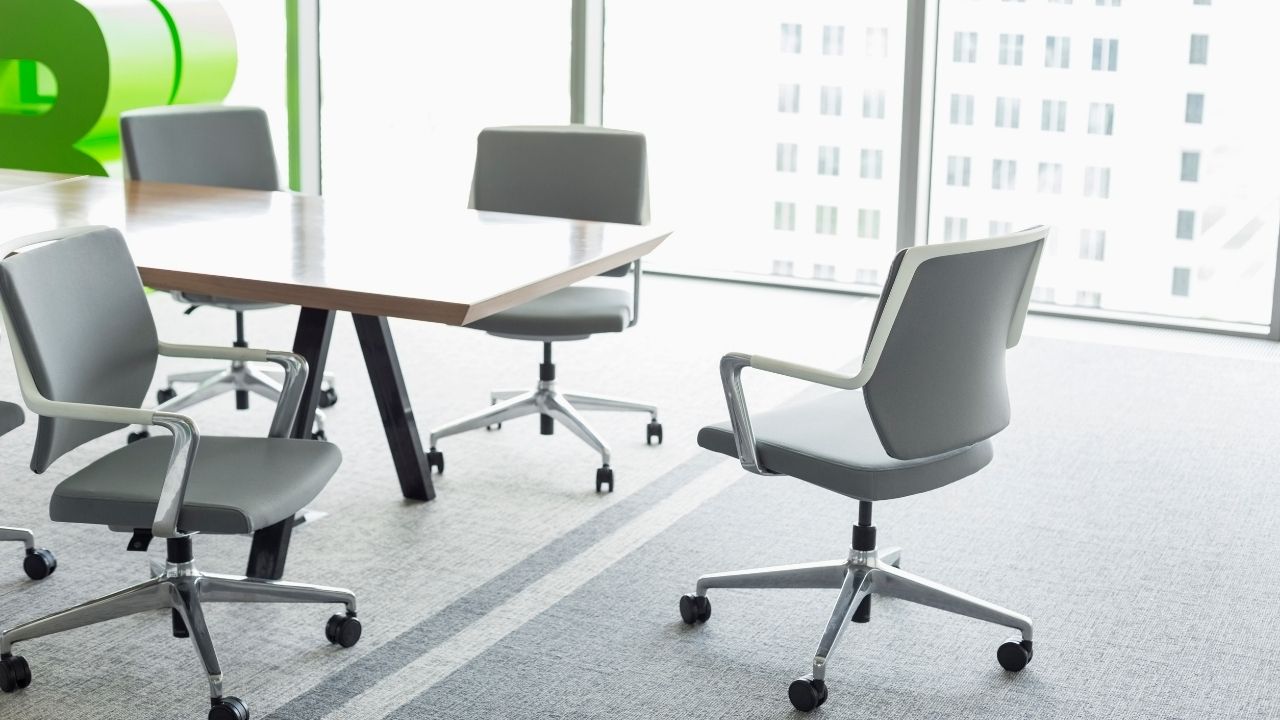
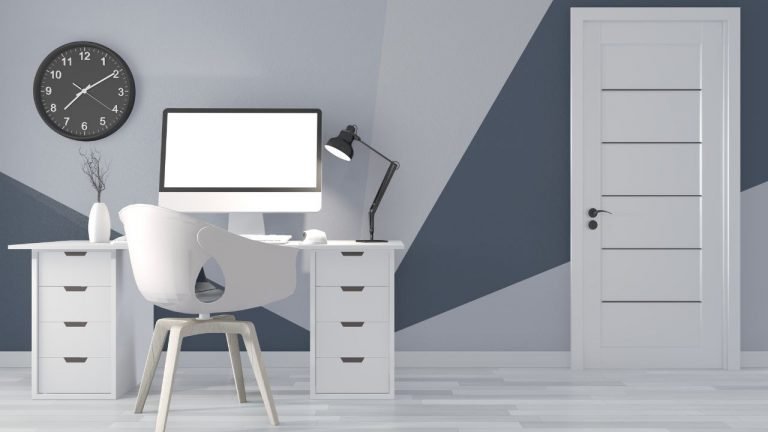

![Vastu For Home Office [Office Desk Arrangement Tips]](https://homethereby.com/wp-content/uploads/2022/01/Vastu-For-Home-Office-768x432.jpg)
